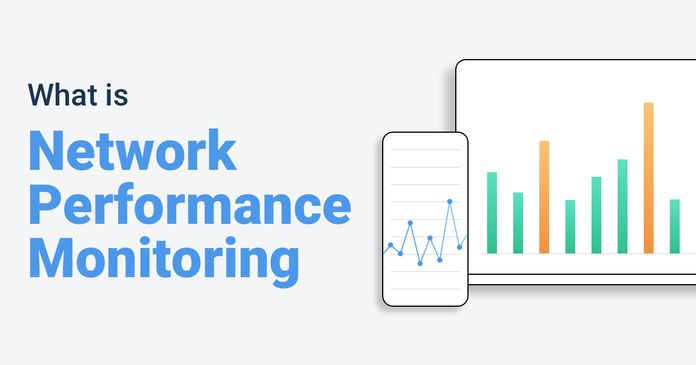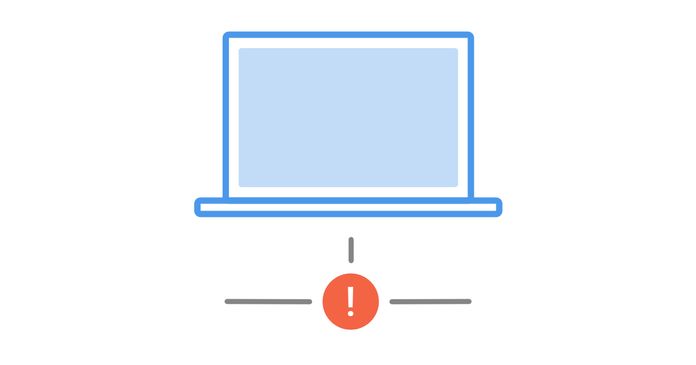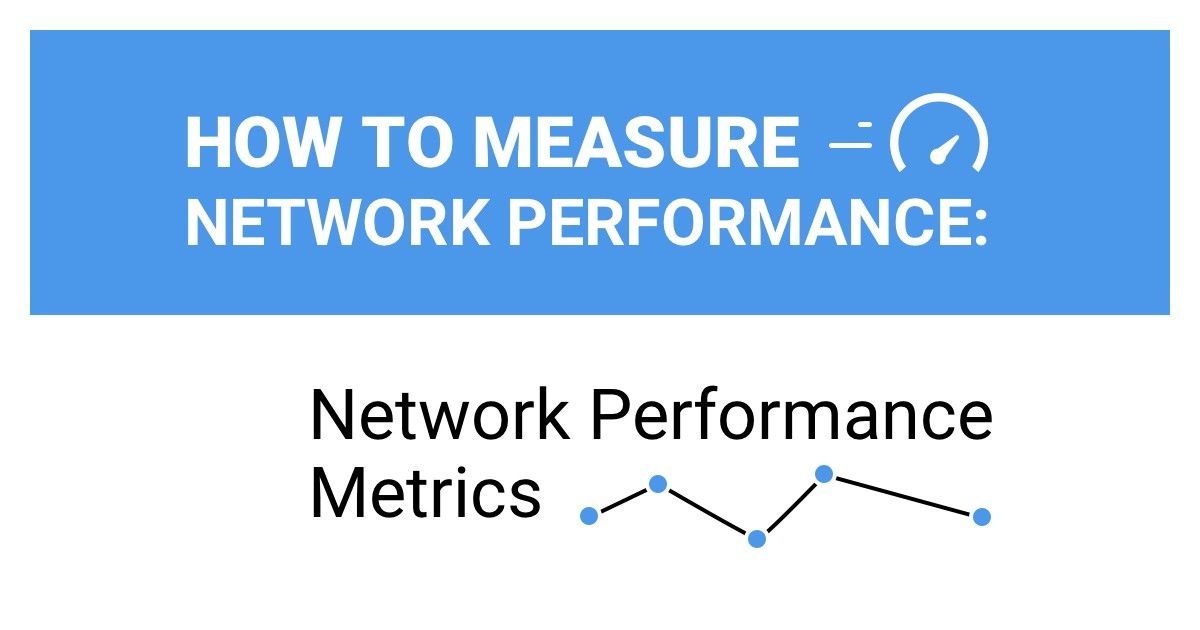Table of Contents
Table of Contents
In a world where seamless online operations are fundamental to success, the reliability of your network infrastructure can make or break your enterprise. Downtime, even for a few minutes, can result in substantial financial losses, frustrated customers, and a tarnished reputation. That's where the power of network uptime monitoring comes into play, acting as a sentinel guarding your digital fortress.
We all know that businesses can no longer afford to adopt a reactive approach when it comes to network stability. The traditional "break-fix" model, where you only address network issues once they've already disrupted operations, is no longer sufficient. Instead, adopting a proactive stance through network uptime monitoring is becoming a strategic imperative.
In this blog post, we will delve into the crucial distinction between proactive and reactive network uptime monitoring and highlight why the former is the key to maintaining business continuity, enhancing customer satisfaction, and ultimately driving growth. We'll explore the tools, strategies, and best practices that can help you stay ahead of network issues, ensuring that your business remains online and operational 24/7.
So, whether you're a small startup aiming to establish a robust digital presence or a large corporation with complex network infrastructure, understanding the power of proactive network uptime monitoring is essential. Let's embark on this journey to discover how being proactive can make all the difference in ensuring the uninterrupted flow of your business operations.
Let’s first review some of the basics!
Network uptime refers to the amount of time a computer network or a particular service within a network is operational and available for use. Network uptime is the opposite of network downtime, which represents the period when a network or service is unavailable or not functioning correctly.
In practical terms, network uptime is a critical metric for assessing the reliability and performance of a network infrastructure. It is especially important in business and mission-critical environments where uninterrupted access to network resources, services, and data is essential.
Network uptime is a measure of reliability and availability and is usually expressed as a percentage.
It is typically measured over a specific period, such as a month or a year, and is calculated as a percentage of the total time in that period during which the network or service was operational. For example, if a network is operational for 99.9% of the time in a month, it has a network uptime of 99.9%.
High network uptime is a key goal for organizations because it ensures that employees, customers, and users can access the services and information they need without disruption. Achieving high network uptime often involves implementing redundancy, failover mechanisms, regular maintenance, and monitoring to quickly identify and address issues that could lead to downtime.
- Business Continuity: Network uptime is crucial for business continuity. Many organizations rely on their computer networks to conduct daily operations, communicate with clients and employees, process transactions, and access critical data. Even a brief network outage can disrupt these activities, resulting in financial losses and customer dissatisfaction.
- Customer Satisfaction: In today's digital age, customers expect seamless access to online services and resources. Network downtime can frustrate customers, erode trust, and damage a company's reputation. High network uptime is essential to meet customer expectations and maintain a positive brand image.
- Financial Implications: Downtime can be expensive. Beyond the immediate loss of productivity and potential revenue, there are hidden costs such as overtime pay for IT staff, expenses related to resolving the issue, and the impact on long-term customer relationships. In some industries, downtime can lead to regulatory violations and penalties.
- Competitive Advantage: Organizations with consistently high network uptime gain a competitive advantage. They can offer more reliable services, attract and retain customers, and outperform competitors who experience frequent downtime. Network reliability is often a selling point in marketing and business negotiations. However, it is not the only factor, so make sure to explore your competitors' strategies and learn how to collect this data and avoid HTTP error 503 by implementing proactive monitoring, optimizing server performance, and ensuring scalable infrastructure to handle traffic spikes efficiently.
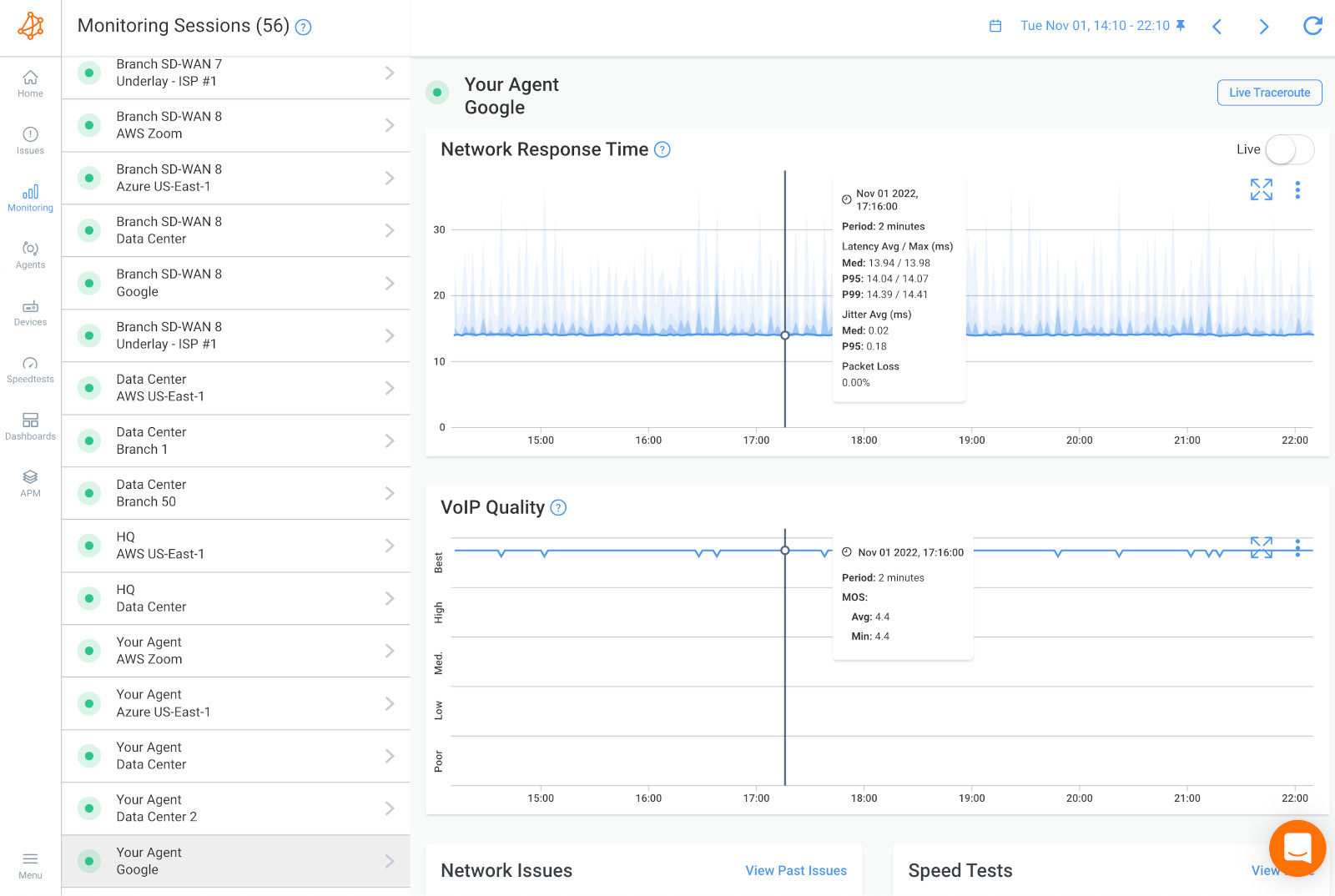

Now, let’s introduce the real star of the show!
Network uptime monitoring is the practice of continuously or periodically tracking the availability and performance of a computer network or specific network services to ensure they are operational and meet predefined performance standards. It involves using various tools, software, and techniques to monitor the network's status and detect any issues or anomalies in real time.
The primary goal of network uptime monitoring is to maximize the availability and reliability of network resources and services.
Key aspects that make network uptime monitoring so effective for understanding and optimizing network uptime include:
- Availability Tracking: Network uptime monitoring tools constantly check the accessibility of network devices, services, servers, and applications. They send requests (e.g., ping requests or HTTP requests) to these resources and measure their response times. If a resource becomes unreachable or responds slowly, the monitoring system triggers alerts.
- Performance Metrics: Monitoring solutions, like Obkio, often collect network performance metrics such as latency, bandwidth utilization, packet loss, and error rates. These metrics help IT teams identify performance bottlenecks or anomalies that could lead to downtime or reduced service quality.
- Alerting and Notification: When a network issue is detected, the monitoring system generates alerts or notifications, which can be delivered via email, SMS, or other communication channels. These alerts prompt IT staff to investigate and address the problem promptly.
- Downtime Detection: Network uptime monitoring is especially focused on quickly detecting network downtime, which is any period when a network or service is unavailable. Detecting downtime as soon as it occurs allows for rapid response and minimizes its impact.
- Proactive Issue Resolution: Proactive monitoring aims to identify potential issues before they cause network disruptions. By analyzing trends and anomalies, IT teams can take preventive actions to address problems before they impact users.
- Logging and Reporting: Monitoring solutions often provide logs and reports that document network performance and uptime over time. These reports can be valuable for analyzing historical trends, identifying recurring issues, and making informed decisions about network improvements.
- Automation: Some advanced monitoring systems incorporate automation features that can perform predefined actions in response to specific alerts. For example, they can restart services, allocate additional resources, or reconfigure network settings to mitigate issues automatically.
Network uptime monitoring is crucial for businesses and organizations, as it helps maintain high service availability, reduce downtime-related costs, improve user satisfaction, and ensure that network infrastructure operates reliably. It is a proactive approach to network management that plays a vital role in today's digital world, where uninterrupted connectivity and access to online services are essential for productivity and customer experience.
Network uptime is critical, and Obkio is here to help! Obkio's Network Monitoring tool is your reliable companion for achieving uninterrupted connectivity and hassle-free IT management.

What Obkio Offers:
- Real-time Insights: Gain immediate visibility into your network's performance with live dashboards and up-to-the-minute data. No more guesswork; just clear network statistics and status.
- User-friendly Alerts: Our alerts are user-centric and free from technical jargon. Obkio will notify you in plain language, making it easy to understand issues as they arise.
- Proactive Issue Resolution: Be the IT hero your organization needs! Obkio helps you detect and address network problems before they disrupt operations.
- Performance Optimization: Boost your network's speed and efficiency. Obkio empowers you to fine-tune your network for peak performance.

In the realm of network management, the difference between proactively steering your course and merely reacting to turbulent waters can be immense. Proactive network uptime monitoring represents a fundamental shift in how organizations approach the reliability and stability of their digital infrastructure.
In this section, we'll dive deep into the core concepts of proactive network uptime monitoring, unravelling the essence of what it is, the invaluable benefits it brings, and how it shines in real-world scenarios. Consider this your compass to navigate the ever-evolving seas of network management, where the proactive approach is your guiding star.
Proactive network uptime monitoring is a modern approach to network management that involves continuously and preemptively monitoring the health and performance of your network infrastructure. Unlike traditional reactive methods, which involve addressing network issues after they've already disrupted operations, proactive monitoring is all about staying one step ahead.
With proactive monitoring, a set of specialized tools and software is employed to keep a watchful eye on every aspect of your network, from hardware and servers to applications and services. These tools regularly send out requests, known as probes or pings, to network devices and services, collecting data on factors like latency, packet loss, and bandwidth utilization.
What sets proactive monitoring apart is its ability to not only identify current network issues but also to predict and prevent potential problems. It accomplishes this by establishing network baselines and thresholds for normal network behaviour. When deviations from these norms occur, the monitoring system raises alerts, enabling IT teams to take proactive measures and resolve issues before they escalate into full-blown outages.
Embracing proactive network uptime monitoring brings a host of advantages to the table:
- Reduced Downtime: The most apparent benefit is the significant reduction in network downtime. Proactive monitoring identifies issues at their inception, allowing for swift remediation and minimizing disruptions. This translates to improved productivity and lower associated costs.
- Enhanced User Experience: Users experience a more stable and responsive network, leading to higher satisfaction and productivity. Fewer interruptions mean smoother business operations.
- Cost Savings: By preventing network issues before they become severe, proactive monitoring reduces the need for costly emergency interventions, overtime payments, and potential loss of revenue due to downtime.
- Improved IT Resource Management: IT teams can allocate resources more efficiently, focusing their efforts on strategic initiatives rather than constantly firefighting network problems.
Learn about network performance monitoring to optimize network performance. Discover key network metrics, tools & techniques & the benefits for businesses.
Learn more

1. Reactive Network Uptime Monitoring:
Traditionally, network management followed a reactive approach. IT teams would only address network issues once they became apparent and caused disruptions. This approach often resulted in extended downtime, frustrated users, and a higher cost of issue resolution.
2. Proactive Monitoring:
Proactive network monitoring represents a significant shift in network management philosophy. Rather than waiting for problems to manifest, organizations proactively monitor their networks in real-time or at regular intervals. They use specialized software and tools to identify potential issues before they impact users, allowing for preventative actions and faster issue resolution.
Reactive network management, though familiar to many organizations, comes with a set of pitfalls that can prove costly in terms of downtime, customer satisfaction, and operational efficiency. Understanding these drawbacks is the first step towards embracing a more efficient and resilient approach to network management.
- The High Cost of Downtime: Reactive network management incurs significant downtime-related costs, including lost productivity, revenue, overtime expenses, data recovery, and customer SLA violations.
- Customer Impact and Reputation Damage: Reactive management frustrates customers and damages a company's reputation, leading to potential customer loss and long-term reputation consequences.
- The Challenges of Playing Catch-Up: Reactive management relies on issue reports, causing delayed problem detection, resource drain, inefficiency, and the risk of issue recurrence. It hampers strategic initiatives and growth.
In deploying Network Uptime Monitoring, a Network Monitoring tool is your best ally. It continuously watches over your network, providing real-time alerts, establishing performance baselines, and maintaining historical data.
With automation features and scalability, it enhances efficiency and helps prevent downtime. Moreover, it offers comprehensive reporting, cost-efficiency, and peace of mind, making it an indispensable tool for proactive network management. Your Network Monitoring tool ensures your network is in safe hands, allowing you to focus on providing a reliable and seamless experience for users or customers.
So how do you set up this? Let’s get into it!
Next, you need to choose the right tool for you!
In the ever-connected digital landscape, where network uptime is the lifeblood of modern businesses, Obkio stands as a steadfast guardian of network reliability.
Obkio is an Active, End-to-End Network Monitoring tool that proactively measures network performance and network uptime to stay ahead of issues and provide seamless connectivity to users and customers.
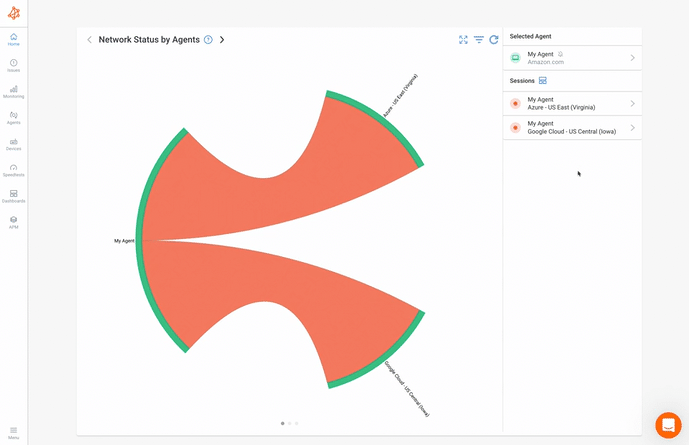
Why Choose Obkio?
- Real-time Vigilance: Obkio's Network Monitoring tool is your vigilant companion, offering real-time insights into network performance. It's like having a network "health tracker" that never takes a break.
- Distributed Monitoring Architecture: Obkio's Network Monitoring tool leverages a distributed monitoring architecture, utilizing Network Monitoring agents strategically placed throughout your network. This architecture ensures comprehensive coverage and pinpoint accuracy in issue detection.
- Proactive Issue Resolution: Believing in staying ahead of problems, not chasing after them, Obkio helps identify and address network issues before they disrupt operations, minimizing downtime and its associated costs.
- Performance Optimization: Not just about identifying issues, but also about making networks perform at their best, Obkio helps fine-tune networks for peak efficiency.
With Obkio's Network Monitoring tool, you're not just managing your network; you're optimizing it for success. Explore how Obkio can revolutionize network uptime monitoring, empower your IT team, and elevate your organization's digital reliability.

Network uptime is a critical aspect of business operations. Downtime can lead to lost productivity, revenue, and customer trust. This is where Obkio's Network Monitoring Agents step in as your essential allies.
Deploying these agents in your network infrastructure opens up a world of possibilities for continuous, proactive network performance monitoring and network uptime monitoring. The Agents are deployed at key network locations and continuously exchange synthetic traffic to monitor network performance as a whole.
To deploy network uptime monitoring in all your network locations, we recommend deploying:
- Local Agents: Installed in the targeted location experiencing network uptime issues. There are several Agent types available (all with the same features), and they can be installed on MacOS, Windows, Linux and more.
- Public Monitoring Agent: These are deployed over the Internet and managed by Obkio. They compare performance up to the Internet and quickly identify if network uptime time issues are global or specific to the destination. For example, measure network uptime time between your branch office and Google Cloud.
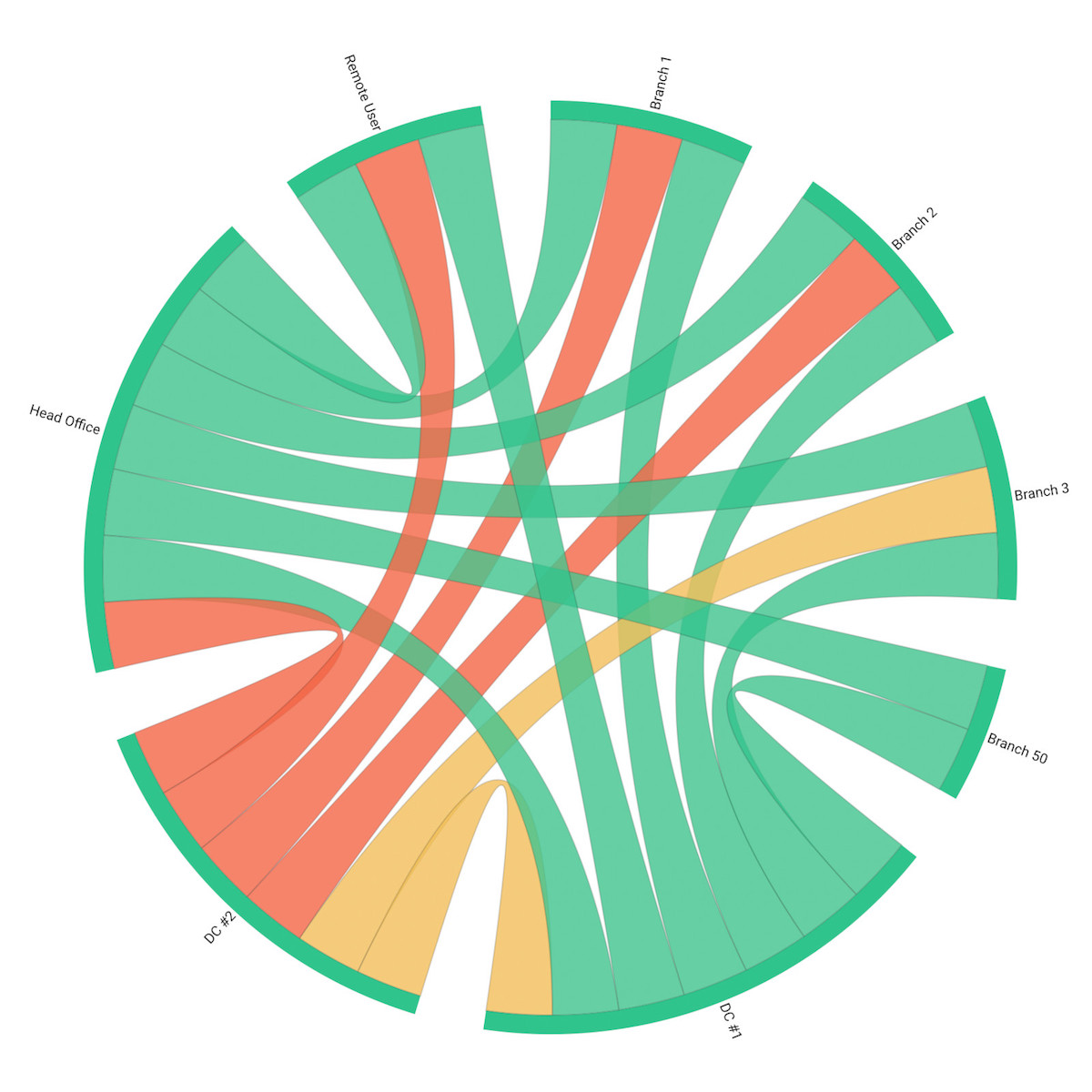
Comprehensive Network Coverage:
Obkio's Network Monitoring agents are strategically placed throughout your network. This placement ensures comprehensive coverage, enabling you to monitor the entire network infrastructure, including servers, routers, switches, and even remote locations. This broad visibility allows you to identify issues wherever they may occur, ensuring that no part of your network goes unnoticed.
End-to-End Performance Monitoring:
These agents provide end-to-end performance monitoring, giving you insights into the entire data path from a user's device to the application server and back. This comprehensive view helps in pinpointing the exact location and nature of performance bottlenecks or connectivity issues. Whether it's a local network problem or a third-party service affecting performance, Obkio's agents have it covered.
Synthetic Traffic Generation:
One of the standout features of Obkio's Network Monitoring agents is their ability to generate synthetic traffic. This means they can simulate user interactions and traffic patterns, essentially mimicking real user behaviour on your network. By doing so, these agents help you proactively test network performance under different conditions. You can identify potential issues before they affect actual users, ensuring that your network remains reliable and responsive.
Next comes monitoring your network devices to identify any network devices or resource issues affecting network uptime.
Obkio’s Network Device Monitoring feature uses SNMP Polling to monitor the performance of networking devices such as firewalls, routers, switches and Wi-Fi access points. It uses ultra-fast polling (every 30 seconds) to quickly detect and diagnose network problems related to short bursts of traffic (packet bursts), CPU utilization, or high bandwidth usage that affect network performance.
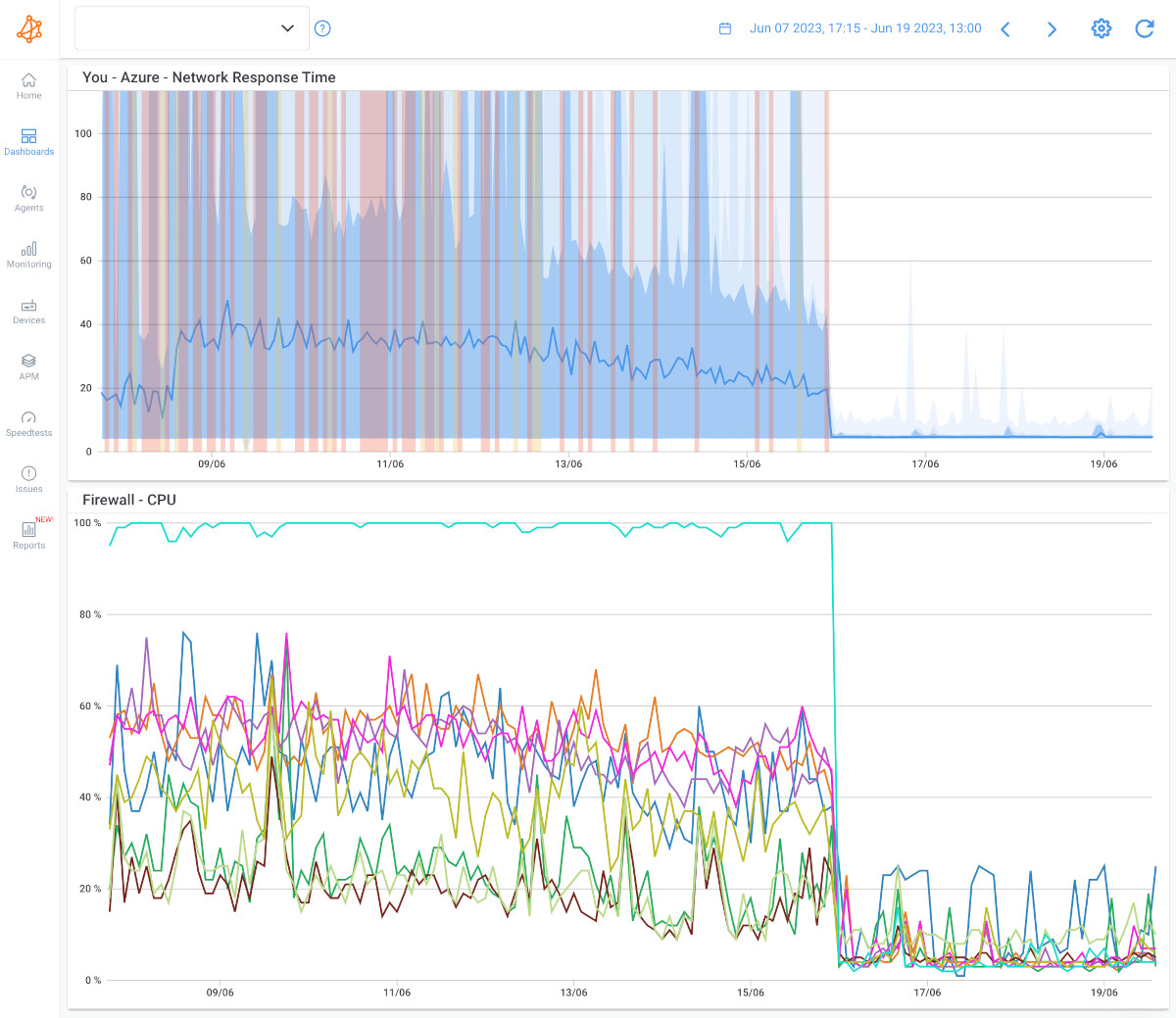
For effective network uptime monitoring, it's crucial to monitor a range of network devices that play integral roles in your network infrastructure.
Here are the key network devices that you should consider monitoring:
- Routers: Routers are responsible for directing network traffic between different networks, making them critical components to monitor. Check for issues like high CPU usage, memory utilization, and interface status.
- Switches: Switches are responsible for local network traffic within a subnet. Monitoring network switches helps ensure that local network connectivity remains stable and that they are not overwhelmed by traffic.
- Firewalls: Firewalls are vital for network security. Monitor firewall devices to ensure that they are operational, rules are correctly configured, and no unauthorized traffic is passing through.
- Load Balancers: If your network uses load balancers to distribute traffic across multiple servers or data centers, monitor these devices to ensure that they are evenly distributing traffic and responding to health checks.
- Gateways: Gateways connect different network segments or protocols. Monitoring gateways is essential for ensuring that they are routing traffic correctly and that they are responsive.
- Proxy Servers: If your organization uses proxy servers for web traffic filtering or caching, monitor them to ensure that they are processing requests efficiently and not causing delays.
- VPN Concentrators: If your organization uses VPNs for remote access, monitor VPN concentrators to ensure that remote users can connect securely and that performance meets expectations.
- Wireless Access Points (APs): If you have a wireless network, monitoring access points is crucial for maintaining wireless connectivity and ensuring that they are not overloaded with connections.
- Intrusion Detection Systems (IDS) and Intrusion Prevention Systems (IPS): These devices monitor network traffic for signs of malicious activity. Continuous monitoring helps ensure they are actively protecting your network.
- VoIP Devices: If your organization relies on Voice over IP (VoIP) for communication, monitoring VoIP devices helps maintain call quality and reliability.
- Network Attached Storage (NAS) Devices: If you use NAS devices for data storage, monitor their availability and performance to ensure data accessibility.
- Print Servers: If you have network-connected printers, monitoring print servers helps ensure that printing services are available and responsive.
- Modems and DSL/Cable Routers: If your network connects to the internet via DSL, cable, or other broadband services, monitor these devices to ensure internet connectivity remains stable.
- Managed Switches and Switch Stacks: For larger networks, managed switches and switch stacks are critical. Monitor their status, configuration, and performance to prevent network bottlenecks.
- Uninterruptible Power Supplies (UPS): While not network devices per se, monitoring UPS devices is essential to ensure network uptime during power outages.
- Environmental Sensors: Some networks, particularly those in specialized environments like data centers, may use sensors to monitor environmental factors like temperature, humidity, and airflow for equipment protection.
By monitoring these network devices, you can proactively detect and address issues that could lead to network downtime. This proactive approach helps maintain high network uptime, ensuring uninterrupted operations and a positive user experience.
Finally, you also need to monitor the performance of key applications and services affecting network uptime using APM. It’s crucial to keep an eye on the availability and responsiveness of the applications and services your organization relies on. This includes email servers, databases, cloud-based services, and any custom applications.
Luckily, Obkio's Application Performance Monitoring (APM) monitoring feature is available to help IT teams with web troubleshooting and confirm if a performance issue is coming from the network or not.
- APM HTTP: As its name suggests, the APM HTTP feature tests a single HTTP URL periodically to extract performance metrics for detailed and real-time URL monitoring.
- APM Web: APM Web is developed as a custom script to test specific web workflows from a full web browser.

Applications and services are the lifeblood of modern organizations, enabling communication, collaboration, and data processing. To maintain network uptime and ensure a seamless user experience, it's crucial to monitor these aspects:
- Email Servers: Email is a mission-critical application for most businesses. Monitoring email servers ensures that users can send and receive messages without interruptions. Common issues to monitor include server availability, message delivery times, and mailbox storage capacity. Additionally, using a phishing link checker can help identify and prevent potential security risks in email communications.
- Databases: Databases store and retrieve critical business data. Monitoring database servers helps identify performance bottlenecks, query slowdowns, and potential data corruption issues. Proactive monitoring ensures that database-driven applications run smoothly.
- Web Servers: If your organization hosts a website or web application, monitoring web servers is essential. It ensures that your web presence remains accessible to users. Common monitoring parameters include server uptime, response times, and HTTP status codes.
- Cloud-Based Services: Many organizations rely on cloud-based services for various functions, such as file storage, collaboration, and software-as-a-service (SaaS) applications. Monitoring cloud services ensures that these external services are available and performing as expected.
- Custom Applications: If your organization has developed custom applications, monitoring them is critical. Custom applications may have unique performance and availability requirements. Monitoring helps identify issues specific to these applications, such as memory leaks or coding errors.
- VoIP Services: Voice over IP (VoIP) services are sensitive to network conditions. Monitoring VoIP services helps maintain call quality and ensures that voice communication remains reliable.
Monitoring applications and services is essential for network uptime monitoring because it ensures that the software and services critical to your organization's operations remain available, responsive, and reliable.
Now, you’re ready! With this end-to-end, continuous network monitoring setup, you now have everything you need to monitor network uptime and identify any network problems affecting network performance.
After deploying your Network Performance Monitoring tool, Obkio's Monitoring Agents exchange synthetic traffic to collect a comprehensive set of data that provides insights into the health, availability, and performance of your network infrastructure, such as:
1. Device Availability Data:
- Device Uptime/Downtime: Timestamps indicating when network devices were up and when they experienced downtime.
- Device Status: The current status (up or down) of network devices like routers, switches, and servers.
2. Performance Metrics:
- Latency: Round-trip time for data packets to travel from source to destination and back. High latency can indicate network congestion or performance issues.
- Packet Loss: The percentage of data packets that are lost or dropped during transmission. Packet loss can impact application performance and user experience.
- Bandwidth Utilization: Data on how much of the available network bandwidth is being used. High utilization can lead to congestion and slowdowns.
- Throughput: The rate at which data is successfully transmitted across the network. Throughput issues can affect the speed of data transfers.
- Jitter: Variation in latency over time. Consistent jitter is crucial for real-time applications like VoIP.
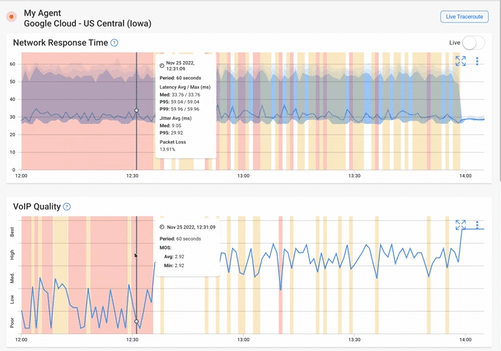
3. Network Traffic Data:
- Traffic Volume: The amount of data transferred over the network during specific time intervals. Monitoring traffic patterns can reveal network usage trends.
- Top Talkers: Identifying which devices or applications generate the most network traffic can help optimize resource allocation.
4. Event Logs:
- Syslog Data: Collect system logs from network devices, servers, and applications to identify events, errors, or anomalies that may impact network uptime.
5. Application and Service Data:
- Application Availability: Data on the availability of critical applications and services, including email servers, databases, and web services.
- Response Times: Metrics indicating how quickly applications or services respond to user requests.
6. User Experience Data:
- User Feedback: Collect feedback from end-users regarding their experience with network services and applications. This qualitative data can complement quantitative metrics.
7. Synthetic Traffic Data:
- Synthetic Tests: Data generated from synthetic tests, such as simulated user transactions or network stress tests, can help proactively identify issues before they impact real users.
8. Alerts and Notifications:
- Alert Data: Information on alerts generated by your network monitoring tools. These alerts indicate potential issues that require attention.
9. Historical Data:
- Historical Performance Data: Collect and store historical data to analyze trends, identify recurring issues, and make informed decisions about network optimization.
10. Configuration Backups:
- Device Configurations: Regularly back up device configurations to ensure that you can quickly restore settings in case of configuration errors or device failures.
Collecting and analyzing this diverse set of data enables you to monitor the network comprehensively, identify potential issues, and take proactive measures to ensure network uptime and reliability.
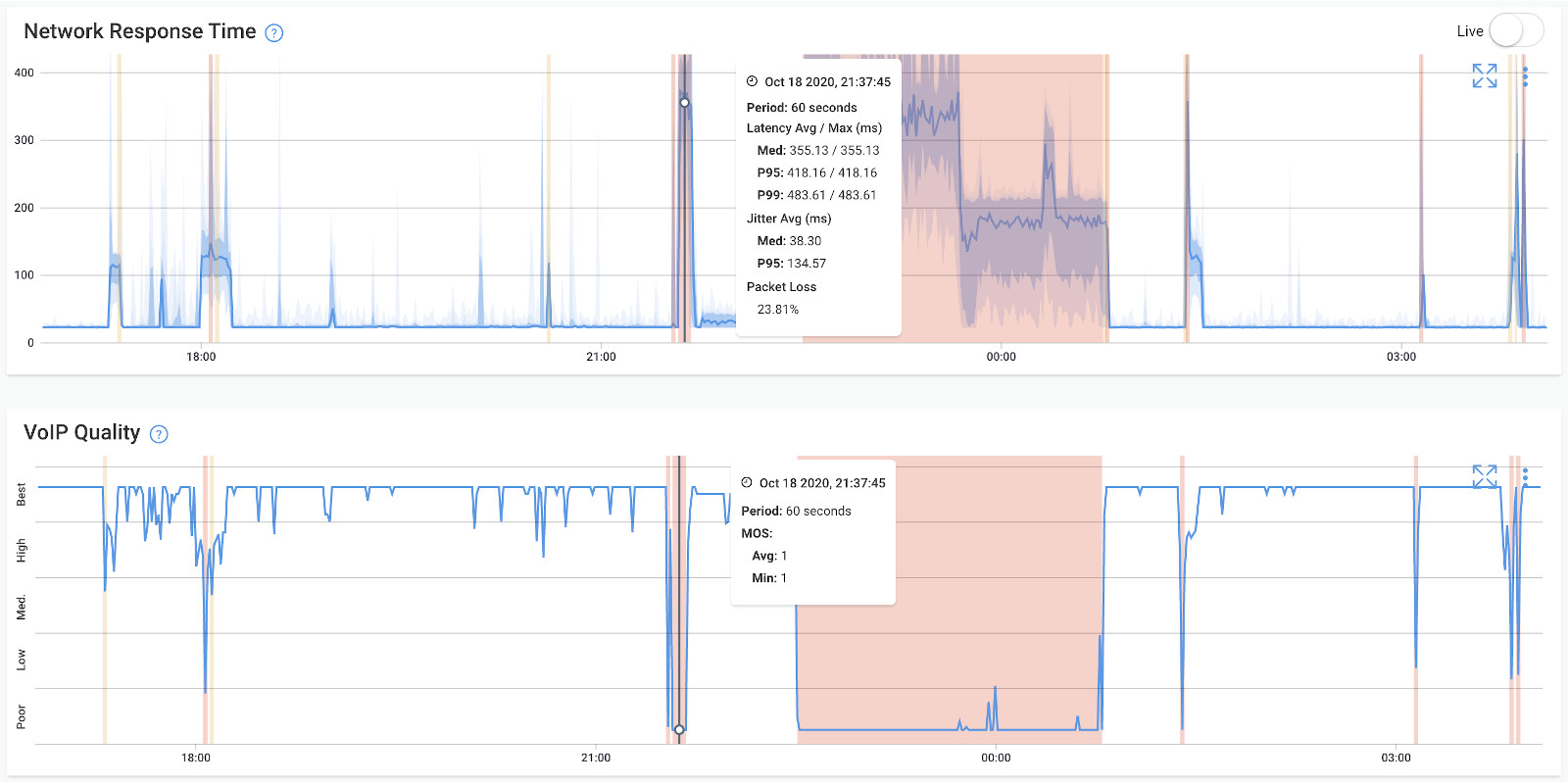

So as you’ve likely noticed from the comprehensive network performance and network uptime monitoring setup, to effectively perform network uptime monitoring, it's essential to monitor various critical components and aspects of your network infrastructure.
Here are the key parts of your network that you should monitor for network uptime monitoring:
- Servers and Hosts: Monitor the availability and performance of your servers and host devices. This includes web servers, application servers, file servers, and any other servers critical to your operations.
- Network Devices: Ensure the continuous operation of network devices such as routers, switches, firewalls, and load balancers. These devices are the backbone of your network and should be closely monitored.
- Network Links and Connectivity: Monitor the status and performance of network links, both internal (LAN) and external (WAN or internet connections). This includes checking for issues like packet loss, latency, and bandwidth utilization.
- Applications and Services: Keep an eye on the availability and responsiveness of the applications and services your organization relies on. This includes email servers, databases, cloud-based services, and any custom applications.
- Data Centers and Cloud Services: If you use data centers or cloud services, ensure they are accessible and performing optimally. This is crucial for organizations that rely on cloud-based infrastructure.
- Remote Locations: If your organization has remote offices or branches, extend your monitoring to cover these locations. Remote locations can experience unique network challenges that need to be addressed proactively.
- End-User Devices: While not typically a part of network uptime monitoring, monitoring end-user devices can provide insights into user experiences. Monitoring device performance can help identify issues related to network connectivity.
- Network Security Devices: Continuously monitor network security devices such as intrusion detection systems (IDS) and intrusion prevention systems (IPS) to ensure they are active and effectively protecting your network.
- Power and Backup Systems: Include monitoring of power sources and backup systems to ensure they can maintain network uptime during power outages or other disruptions.
- Environmental Factors: In some cases, monitoring environmental conditions like temperature and humidity in data centers or network closets is essential to prevent equipment failures due to adverse conditions.
- Third-party Services and APIs: If your network relies on third-party services or APIs, monitor their availability and response times. Outages or slowdowns in third-party services can impact your network's performance.
- DNS and Domain Registration: Ensure that your domain names and DNS services are active and correctly configured. DNS issues can lead to service disruptions.
By monitoring these critical components and aspects of your network, you can proactively detect and address issues that could lead to network downtime. This proactive approach helps maintain high network uptime, ensuring uninterrupted operations and a positive user experience.


Network uptime can be affected by a wide range of network issues, both internal and external. These issues can disrupt network connectivity, impact service availability, and lead to downtime.
With Obkio's Network Monitoring tool, you're equipped with a powerful ally that can help you stay ahead of the curve. By continually monitoring your network, Obkio enables you to spot and troubleshoot the very issues that threaten network uptime, ensuring a seamless digital experience for your users.
Here are common network issues that can affect network uptime that you may uncover:
1. Hardware Failures:
- Router or Switch Failures: Malfunctioning or failed routers or switches can disrupt network traffic routing and cause downtime.
2. Network Congestion:
- Bandwidth Saturation: When network traffic exceeds available bandwidth, it can lead to network congestion, causing delays and slowdowns for users.
3. Distributed Denial of Service (DDoS) Attacks:
- DDoS Attacks: Attackers flood a network with a massive volume of traffic, overwhelming network resources and causing service outages.
4. Software Failures:
- Operating System Crashes: Software crashes or bugs in network devices can result in device restarts or loss of functionality.
5. Configuration Errors:
- Misconfigured Devices: Incorrectly configured network devices can disrupt routing, security, and service delivery.
6. Power Outages:
- Power Failures: Power outages or electrical issues can result in network equipment shutdowns unless backup power systems like UPS are in place.
7. Cable or Fiber Optic Damage:
- Physical Cable Damage: Cut, damaged, or severed cables can disrupt network connections and lead to downtime.
8. ISP or Carrier Outages:
- Internet Service Provider (ISP) Outages: Disruptions in ISP services can impact external network connectivity.
- Carrier Network Issues: Problems with the network infrastructure of telecom carriers can affect wide-area network (WAN) services.
9. Server Failures:
- Application Server Failures: Failures or crashes of critical application servers can result in service unavailability.
- Database Server Failures: Downtime of database servers can affect data access and application functionality.
10. Security Incidents:
- Malware Infections: Malware or ransomware attacks can disrupt network operations, compromise data, and lead to downtime.
- Unauthorized Access: Unauthorized access attempts or breaches can disrupt network services and require investigation.
11. DNS Issues:
- DNS Server Failures: DNS server outages can make it impossible for users to access websites or services via domain names.
12. Natural Disasters:
- Floods, Earthquakes, Storms: Natural disasters can damage network infrastructure and cause power outages.
13. Software Updates and Patches:
- Patch Failures: Applying updates or patches to network devices can sometimes lead to issues if not tested properly.
14. Routing Problems:
- BGP (Border Gateway Protocol) Errors: Incorrect BGP configurations or route hijacking can disrupt internet connectivity.
15. End-User Errors:
- Misconfigurations: End-users can inadvertently misconfigure network settings or devices, leading to connectivity issues.
16. Environmental Factors:
- Temperature and Humidity: Extreme environmental conditions in data centers or network closets can lead to equipment failures.
17. Cable Congestion:
- Cable Overloading: Overloading cables with too many connections can result in physical damage and signal degradation.
18. VoIP Quality Issues:
- Network Jitter and Packet Loss: These issues can disrupt VoIP quality in VoIP systems, leading to poor call experiences.
19. Lack of Redundancy:
- Single Points of Failure: Insufficient redundancy in critical network components can lead to downtime if a component fails.
20. Network Device Vulnerabilities:
- Exploitable Vulnerabilities: Unpatched or vulnerable network devices can be exploited by attackers, leading to service disruptions.
Proactively monitoring and addressing these network issues is essential for maintaining high network uptime. Employing redundancy, disaster recovery plans, network monitoring tools, and security measures can help mitigate the impact of these issues on network reliability and availability.
Learn how to identify network issues by looking at common problems, causes, consequences and solutions.
Learn more

Network uptime monitoring and network availability monitoring are closely related concepts, but they focus on slightly different aspects of network performance. Understanding the subtle yet significant differences between network uptime monitoring and network availability monitoring is essential for effectively ensuring the reliability and performance of your network infrastructure.
Uptime Focus: Network uptime monitoring primarily focuses on tracking the amount of time that a network or specific network components remain operational and available for use. It measures the percentage of time that a network is "up" and accessible.
Downtime Measurement: Uptime monitoring specifically measures downtime, which is the duration during which network services or devices are unavailable. Downtime can result from various issues, including hardware failures, software glitches, or network congestion.
Response to Outages: Uptime monitoring is often used to detect outages and disruptions as quickly as possible. It aims to provide real-time alerts when network components or services go down so that IT teams can respond promptly to minimize downtime.
Key Metrics: Key metrics in uptime monitoring include availability percentages (e.g., 99.9% uptime), mean time between failures (MTBF), and mean time to repair (MTTR).
Objective: The primary objective of uptime monitoring is to maximize the continuous availability of network services and components to ensure uninterrupted operations.
Availability Focus: Network availability monitoring is a broader concept that encompasses not only uptime but also the accessibility and responsiveness of network services and resources.
Performance Metrics: While availability monitoring includes uptime as a component, it also measures various performance metrics, such as response times, latency, packet loss, and service availability.
Proactive Performance Monitoring: Availability monitoring goes beyond detecting outages and includes proactive monitoring of performance parameters. It helps identify bottlenecks, congestion, and performance degradation that may not result in complete downtime but can impact user experience.
User-Centric: Availability monitoring often adopts a more user-centric perspective, focusing on ensuring that network services are not only up but also responsive and meeting performance expectations from the end-user's standpoint.
Objective: The primary objective of availability monitoring is to ensure that network services and resources are not only available but also performing optimally to meet user needs and expectations.
Learn what network availability is, how to use network availability monitoring to identify network performance issues vs. network availability issues.
Learn more

In summary, while network uptime monitoring primarily concentrates on measuring the duration of uninterrupted network operation and detecting outages, network availability monitoring encompasses a broader set of performance metrics and aims to ensure that network services are not only up but also responsive and meeting performance expectations.
In our journey to understand and ensure network uptime, we've already delved into the comprehensive and proactive world of continuous Network Monitoring. However, the toolbox of network professionals isn't limited to a single instrument.
In this section, we'll explore a spectrum of techniques that go hand in hand with continuous monitoring. These techniques offer diverse insights and capabilities, allowing you to tailor your approach to the specific needs and challenges of your network infrastructure. While continuous monitoring serves as the cornerstone, these additional techniques add valuable dimensions to your network uptime strategy.
Ping monitoring involves sending ICMP (Internet Control Message Protocol) echo requests to network devices or hosts. It checks whether a device is reachable and measures response times. If a device fails to respond to pings, it may indicate downtime.
SNMP allows for the monitoring of network devices and their performance. SNMP-enabled devices send data, such as CPU usage, memory utilization, and interface status, to a central monitoring system. Deviations from normal values can trigger network monitoring alerts.
Syslog monitoring collects and analyzes system log messages generated by network devices, servers, and applications. Unusual or error messages in syslog data can indicate issues that may lead to downtime.
Flow-based monitoring tracks traffic flows on the network. NetFlow, sFlow, and IPFIX are common flow monitoring protocols. This technique provides insights into traffic patterns, volume, and application usage, helping to detect anomalies that might affect network availability.
Packet capture tools capture and analyze individual network packets. This technique allows for in-depth analysis of network traffic, including troubleshooting network issues that may impact uptime.
Synthetic monitoring involves simulating user interactions with network services and applications. By generating synthetic traffic, organizations can proactively test network performance and detect issues before real users are affected.
Obkio is a Synthetic Network Monitoring tool, therefore, to use this technique, you can follow the steps we outlined earlier in this article.
End-User Experience monitoring focuses on monitoring the experiences of real end-users. It involves collecting data on application responsiveness, load times, and user satisfaction. This approach provides insights into how network issues affect actual users.
Testing redundancy and network failover mechanisms is a proactive technique. By intentionally triggering failover events, organizations can assess the effectiveness of backup systems and minimize downtime in case of failures.
Regular checks are performed to ensure that critical network services, such as DNS, DHCP, email, and web services, are continuously available and responsive.
Environmental sensors monitor conditions in data centers or network closets, including temperature, humidity, and airflow. Maintaining optimal environmental conditions prevents equipment failures due to adverse conditions.
Regularly reviewing and managing device configurations helps prevent misconfigurations that could lead to network outages. Configuration management tools can automate this process.
Monitoring adherence to SLAs (SLA monitoring) helps ensure that external services and providers meet their uptime commitments, reducing the risk of downtime associated with third-party services.
Using machine learning and AI-based tools, organizations can identify anomalies in network traffic and behavior. This technique helps detect unknown issues that traditional monitoring may miss.
Event correlation tools analyze various data sources to identify patterns and correlations that may indicate network issues. This approach helps pinpoint the root cause of problems.
Organizations with multiple data centers or geographic locations test redundancy and failover across sites to ensure uninterrupted service even in the event of site-specific failures.
Black box testing simulates network outages to test the robustness of network resilience mechanisms and response procedures.
Different organizations may use a combination of these techniques, tailored to their specific needs and the complexity of their network infrastructure, to ensure comprehensive network uptime monitoring and proactive issue resolution.
In the world of network management, the clock never stops ticking, and downtime is not an option. One of the central objectives of network uptime monitoring is to swiftly identify and address issues that might disrupt the rhythm of network time. It's a proactive approach aimed at optimizing network uptime as a whole.
So let’s explore the tips, tricks and techniques that empower organizations to troubleshoot effectively, maintain resilience, and ensure that the network clock never falters.
- Continuous Network Monitoring: As discussed earlier, continuous network monitoring using specialized tools and agents, like Obkio’s Network Monitoring tool, provides real-time visibility into network health. It helps detect issues proactively and ensures rapid responses to incidents.
- Redundancy and Failover: Implement redundancy at critical points in your network architecture. Redundant components, such as backup servers, routers, and internet connections, can automatically take over in case of primary system failures.
- Load Balancing: Distribute network traffic across multiple servers or data centers using load balancers. This technique prevents overloading of individual servers and ensures high availability of services.
- High Availability (HA) Clusters: Configure servers and applications in high availability clusters. If one node fails, another node in the cluster takes over, minimizing downtime.
- Failover Testing: Regularly test network failover mechanisms and redundancy setups to ensure they function as expected when needed.
- Quality of Service (QoS): Prioritize network traffic by using QoS policies. This ensures that critical applications receive sufficient bandwidth and that less critical traffic does not impact network performance.
- Network Segmentation: Segment the network to isolate different types of traffic and limit the impact of issues in one segment on other parts of the network.
- Regular Maintenance: Schedule routine maintenance for network devices, servers, and software to address potential issues before they lead to outages.
- Change Management: Implement change management processes to ensure that configuration changes are thoroughly tested and documented to prevent misconfigurations that can cause downtime.
- Capacity Planning: Continuously monitor network traffic, network utilization and resource utilization to predict future capacity needs. Expand capacity proactively to accommodate growth and prevent congestion-related downtime.
- Patch Management: Regularly apply security patches and updates to network devices, operating systems, and applications to address vulnerabilities that could be exploited to disrupt network services.
- SLA Monitoring: Continuously monitor and enforce service-level agreements (SLAs) with third-party service providers to ensure they meet their uptime commitments from service or Internet SLAs.
- Remote Monitoring and Management (RMM): Use remote monitoring and management tools to proactively identify and address issues on network devices and servers, even in distributed or remote environments.
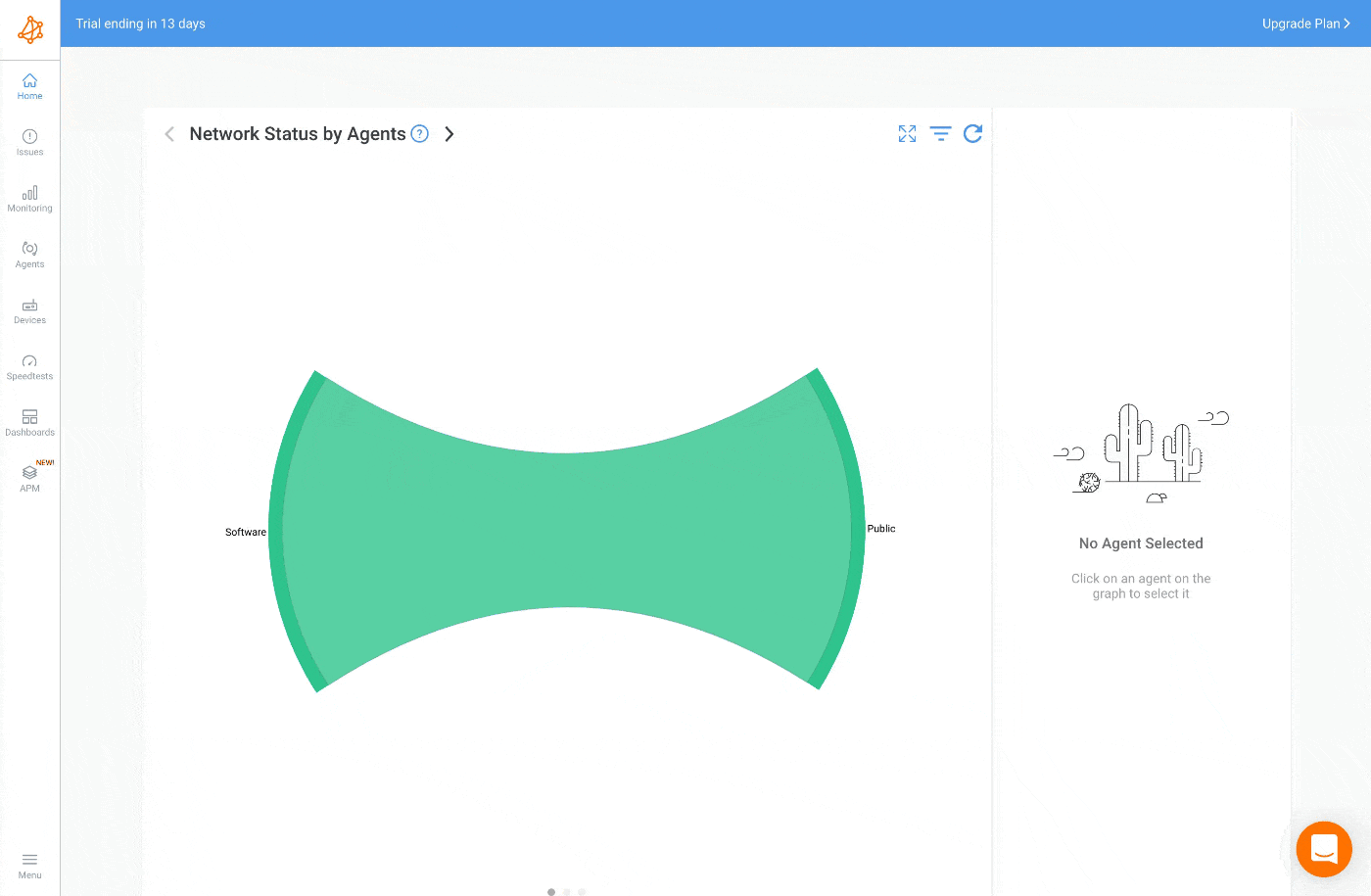
As our journey through the world of network uptime monitoring nears its end, we'd like to ensure that you depart with a treasure trove of knowledge and actionable insights. Before we bid you adieu, we've gathered a set of final network monitoring best practices that serve as guiding lights for optimizing your network's resilience and performance.
These practices encapsulate the essence of proactive monitoring, scalability, growth management, and continual improvement. Let's uncover the last nuggets of wisdom that will help you keep your network clock ticking seamlessly.
- Continuous Monitoring: Continuous monitoring involves real-time tracking of network performance metrics, such as latency, packet loss, and bandwidth utilization. It offers immediate visibility into network health and enables rapid issue detection. This approach is ideal for critical systems and services that demand minimal downtime.
- Periodic Scans: Periodic scans involve intermittent checks of network performance at scheduled intervals. While less resource-intensive than continuous monitoring, periodic scans may not provide immediate insights into issues. They are suitable for less critical components or as a supplementary monitoring method.
- Best Practice: Employ continuous monitoring for mission-critical systems and services, and use periodic scans for less critical components to balance resource usage.
As your network grows and evolves, your monitoring solution should be scalable and adaptable. Ensure that your monitoring tools can accommodate the addition of new devices and services without causing disruptions.
Consider cloud-based network monitoring solutions that offer scalability on-demand, allowing you to adjust resources as needed.
Regularly assess your network's growth and capacity requirements. Monitor traffic patterns and usage trends to anticipate potential scalability issues.
Implement automated alerts and network capacity plannin tools to proactively address network growth challenges before they impact uptime.


Network monitoring is not a set-it-and-forget-it task. Periodically review and evaluate your monitoring strategy and tools to ensure they remain effective.
Optimize alert thresholds, update monitoring policies, and refine response procedures based on lessons learned from past incidents.
Consider conducting post-mortem analyses of major incidents to identify areas for improvement and implement preventive measures.
Network uptime is the heartbeat of modern organizations. In a digital landscape where every heartbeat counts, being proactive in ensuring network uptime is not just a best practice—it's a competitive edge. Organizations that adopt proactive uptime monitoring are equipped to swiftly detect, respond to, and mitigate potential disruptions or network disconnections. This agility translates into enhanced user experiences, improved productivity, and fortified business continuity, giving them a distinct edge in the competitive market.
Proactive uptime monitoring fundamentally transforms how we perceive and manage network health. It's a paradigm shift from reactive firefighting to strategic anticipation. By staying ahead of network issues, organizations can confidently navigate the digital realm, meeting the demands of an always-on world.

Embarking on the journey of proactive network uptime monitoring begins with the right tools and the right approach.
Obkio's Network Monitoring tool stands as a beacon, guiding organizations toward a proactive stance in network management. With Obkio, you can embrace continuous monitoring, harnessing real-time insights into your network's heartbeat. The tool empowers you to identify issues before they escalate, providing the means to optimize performance and resilience.
As we conclude this exploration into the world of network uptime monitoring, remember that the heartbeat of your network is within your control. Embrace the proactive approach, leverage the right tools, and stride confidently into a future where network uptime isn't just a necessity, but a strategic advantage.



























 Obkio Blog
Obkio Blog




